In today’s digital age, smartphones like the iPhone 15, Galaxy S23 Ultra, and Google Pixel 8 Pro are pushing the boundaries of mobile photography. But what exactly contributes to the superior image quality these modern smartphone cameras offer?Today, we’ll pull back the curtain on this complex technology. We’ll explore each component’s role, debunk the myth that more megapixels always mean better image quality, and highlight the key factors that truly define an exceptional smartphone camera.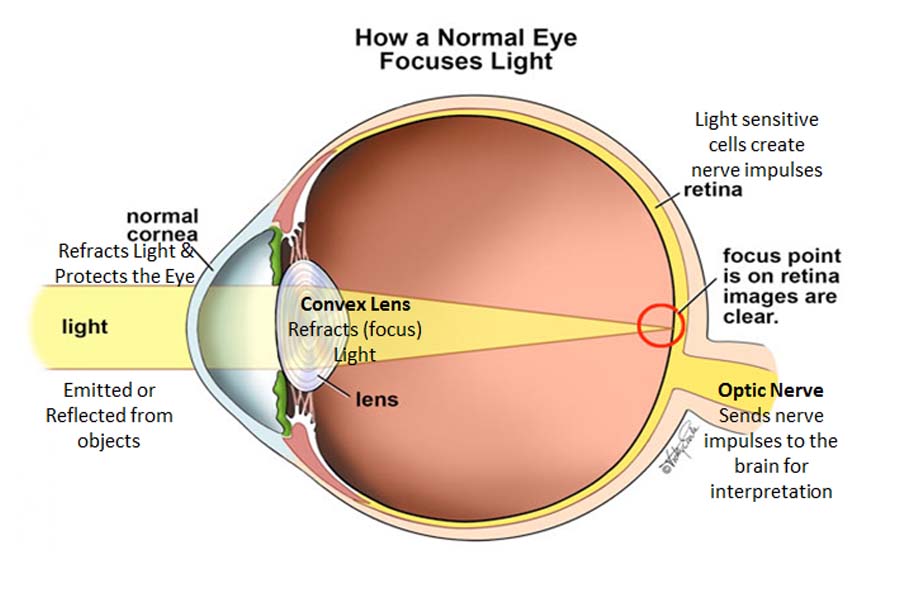 Let's compare cameras to our eyes. Both have a lens that helps to focus light. In our eyes, the cornea and lens are like the camera's lens, and the retina is similar to the camera's sensor. This comparison shows how cameras are cleverly designed to mimic the way our eyes see things.Now let's delve into exploring the crucial physical elements of the Camera
Let's compare cameras to our eyes. Both have a lens that helps to focus light. In our eyes, the cornea and lens are like the camera's lens, and the retina is similar to the camera's sensor. This comparison shows how cameras are cleverly designed to mimic the way our eyes see things.Now let's delve into exploring the crucial physical elements of the Camera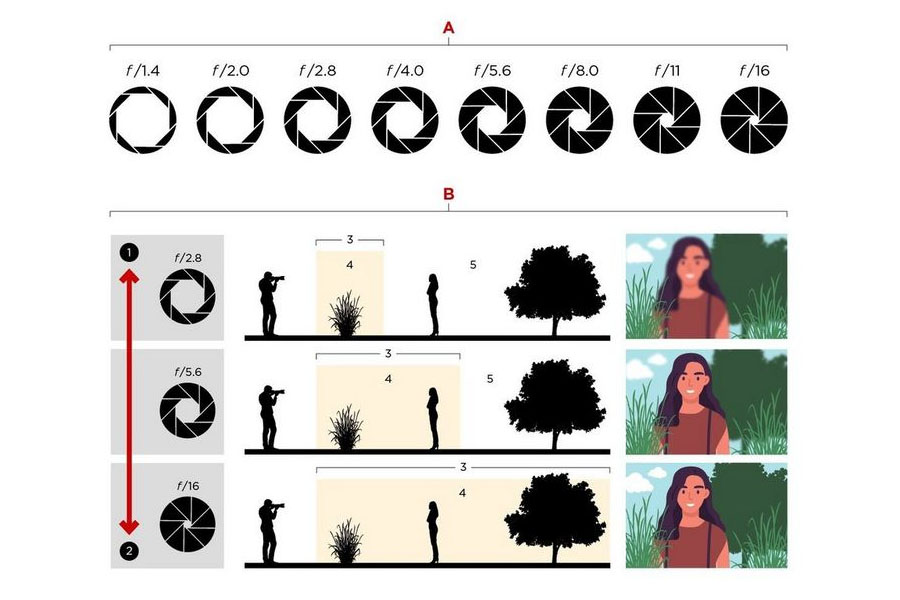 The aperture and lens, integral elements in cameras, play a pivotal role in shaping the quality of captured images. The aperture, the opening in the camera lens, serves as the gateway for light entering the camera. Its size, denoted by f-stops, dictates the brightness or darkness of the resulting photo. Collaborating with the aperture, lenses regulate the influx of light into the camera. In essence, the aperture and lens operate harmoniously to manage the light reaching the camera's sensor, ultimately influencing image quality.
The aperture and lens, integral elements in cameras, play a pivotal role in shaping the quality of captured images. The aperture, the opening in the camera lens, serves as the gateway for light entering the camera. Its size, denoted by f-stops, dictates the brightness or darkness of the resulting photo. Collaborating with the aperture, lenses regulate the influx of light into the camera. In essence, the aperture and lens operate harmoniously to manage the light reaching the camera's sensor, ultimately influencing image quality.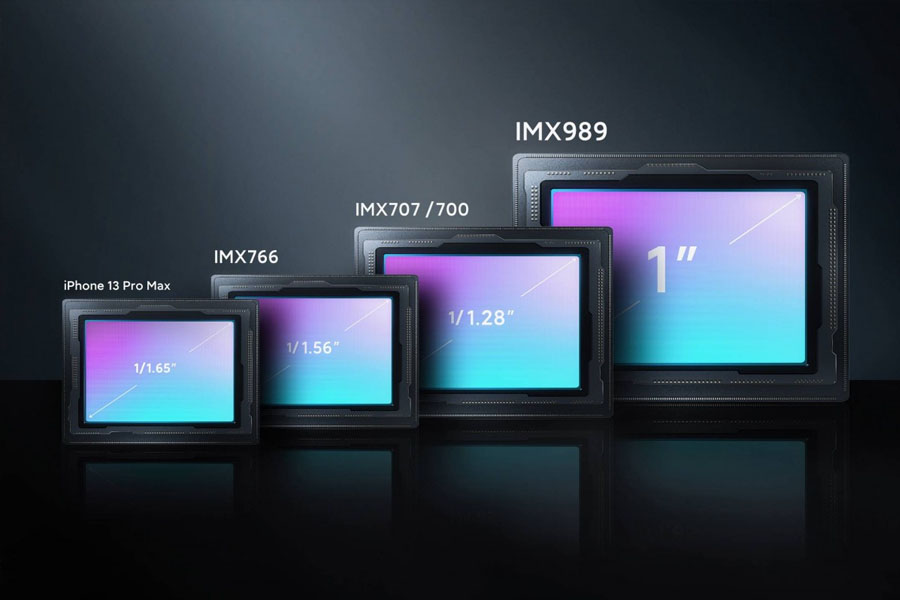
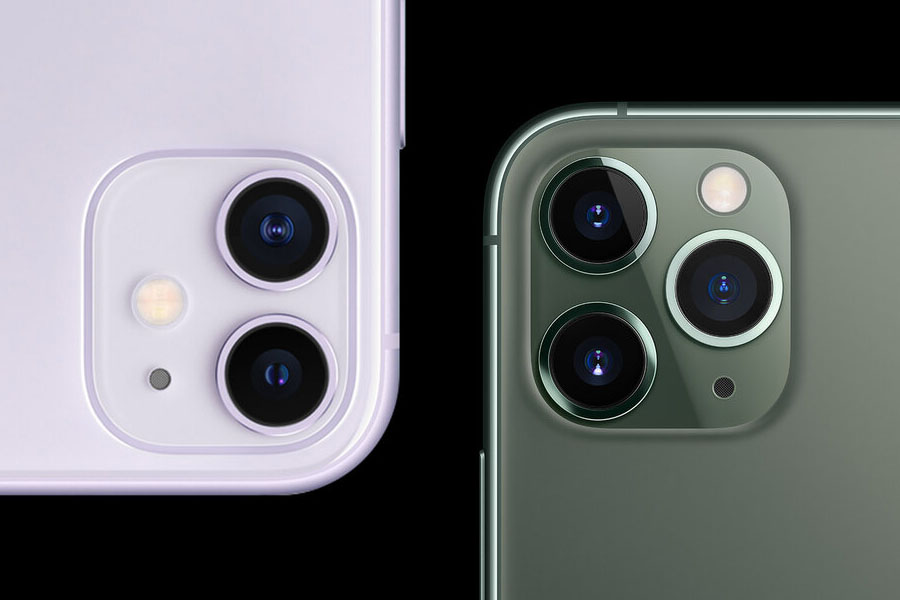
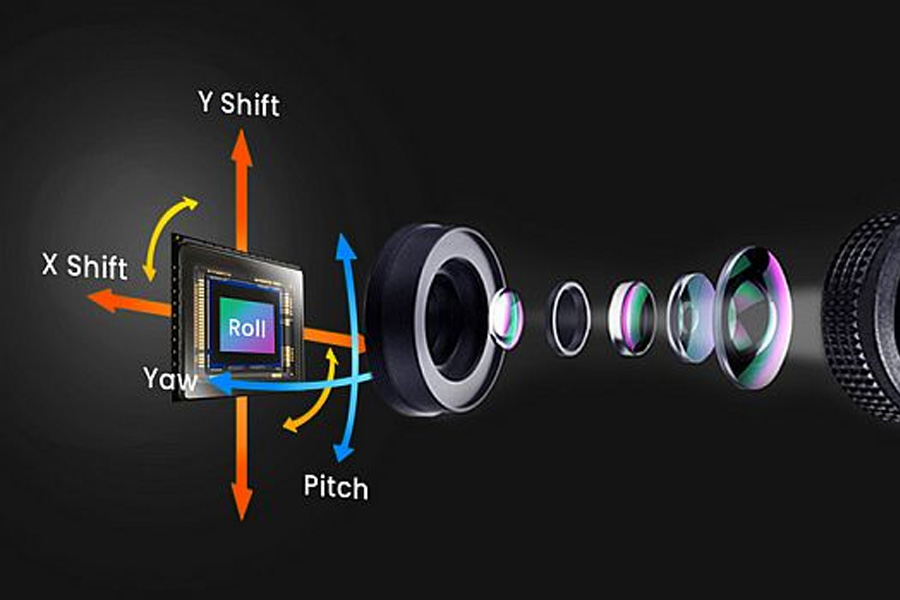 Here's the breakdown:Detection: OIS uses tiny gyroscopic sensors to detect any tilting or wobbling of your smartphone. These sensors work together with moving lens parts and a gyroscope to stay on top of your phone's movements.Compensation: When you snap a photo or start recording, OIS jumps into action. It notices any hand shakiness and quickly moves the lens or camera sensor to balance things out. For instance, if your hand tilts left, OIS shifts the camera a bit to the right.Result: This superhero feature is fantastic, especially in low-light situations or when you're shooting videos. It makes your photos and videos much clearer and sharper compared to if you didn't have stabilization, especially when using your phone without a tripod. OIS ensures that your memories come out looking top-notch!
Here's the breakdown:Detection: OIS uses tiny gyroscopic sensors to detect any tilting or wobbling of your smartphone. These sensors work together with moving lens parts and a gyroscope to stay on top of your phone's movements.Compensation: When you snap a photo or start recording, OIS jumps into action. It notices any hand shakiness and quickly moves the lens or camera sensor to balance things out. For instance, if your hand tilts left, OIS shifts the camera a bit to the right.Result: This superhero feature is fantastic, especially in low-light situations or when you're shooting videos. It makes your photos and videos much clearer and sharper compared to if you didn't have stabilization, especially when using your phone without a tripod. OIS ensures that your memories come out looking top-notch!
Smartphone Camera: An Overview
What Defines a Camera:
At its essence, a camera serves as a visual instrument crafted to encapsulate moments by channeling light onto a photosensitive surface, typically a sensor or film, translating scenes into tangible images.Chronicles of the Camera:
Humans have always wanted to capture the world, and the camera is proof of that. From projecting images in a room through a hole in a curtain (aka Camera obscure) to the groundbreaking daguerreotype of the 19th century, the evolution of cameras has been a remarkable journey. The arrival of modernity brought in smaller, digital alternatives, changing the way we tell stories through visuals.A Mirror to Our Vision:

Image Quality: Lens and Aperture

How does Aperture affect the image quality?
Certainly, let's provide a bit more detail while keeping it simple:Aperture
Think of the aperture as the camera's eye. It's like the pupil in your eye that adjusts to control the amount of light. By changing the aperture size, we can control how much light enters the camera.Depth of Field (DoF):
Depth of Field is about how much of the photo is in focus. A small aperture (big f-number) gives a wider focus range, keeping more of the image sharp. A large aperture (small f-number) creates a narrow focus range, emphasizing a specific part.F-stop:
The f-stop is the number that indicates the size of the aperture. A smaller f-stop (like f/1.4) means a larger aperture, allowing more light for a brighter photo. A larger f-stop (e.g., f/16) means a smaller aperture and a darker image.Various F-stops
Different f-stops like f/2.8, f/5.6, etc., control the amount of light. Going from one f-stop to the next either doubles or halves the light entering the camera.Relevance in Smartphone Cameras
In smartphones, a higher f-number means a smaller aperture, letting in less light. Smartphone cameras use f-stop to adjust exposure and depth of field, similar to traditional cameras.Comparison of Smartphone Cameras:**
Budget Smartphones:
Budget smartphones often come equipped with decent cameras, like the Redmi Note 12 Pro+ 5G with its impressive 200MP camera. While specific aperture details may not always be provided due to cost considerations, these phones, although not featuring the widest apertures, still deliver satisfactory photography capabilities.Mid-Range Smartphones:
Mid-range smartphones strike a balance between cost and camera performance. Take the Xiaomi Redmi Note 12, for instance, boasting a 48 MP primary camera with a wider f/1.8 aperture. This broader aperture enhances low-light photography, setting it apart from budget alternatives.Flagship Smartphones:
Flagship smartphones stand out with advanced camera systems featuring wide apertures. Devices like the iPhone 13, Pixel 6, and Samsung Galaxy S21 Ultra showcase apertures of f/1.9 or even wider. A wider aperture allows more light to reach the camera sensor, resulting in superior performance, especially in low-light conditions.Sensor Technology:
Delving into sensor technology, we encounter two prevalent types: CMOS (Complementary Metal-Oxide-Semiconductor) and CCD (Charge-Coupled Device). CCDs are less prevalent in today's smartphones, and CMOS sensors dominate the scene. CMOS sensors are favored for their power efficiency, utilizing metal-oxide-semiconductor technology to capture light. Their flexibility contributes to advantages in cost, energy efficiency, and faster data readout.
Sensor's Crucial Role:
At the heart of every smartphone camera lies a sensor—an electronic component converting light into electrical signals, shaping the basis of an image. A critical aspect influencing a camera's performance is the sensor size. Larger sensors excel in low-light conditions, capturing more light and enhancing details. Pixel size within the sensor matters significantly, with larger pixels contributing to improved dynamic range. It's essential to debunk the megapixel myth, as a balanced approach between sensor size, pixel size, and megapixel count is key to optimal performance.In case you didn't understand, think of a camera sensor as the "eye" of your camera. Imagine you're in a dark room, and you want to see what's around you. Your eyes act like the camera sensor. When you open the door a crack to let in some light, you can see a bit, but not everything clearly. In this scenario, the door crack represents the camera aperture.Now, the camera sensor is like the part of your eye that captures and processes the light. The bigger and more sensitive this sensor is, the more details it can pick up, just like having a bigger eye that can see more in a dark room. In a camera, a good sensor helps capture clear and detailed pictures, especially in low-light situations.So, when someone talks about a camera sensor, they're basically referring to how well the camera can "see" and capture images, kind of like how your eye helps you see in different lighting conditions.Megapixels and Their Role
In the realm of digital imaging, megapixels are a fundamental measure that often garners attention. A megapixel is equivalent to one million pixels, and it is used to quantify the resolution of an image captured by a camera.At its core, a megapixel is a unit representing the number of individual pixels in an image. A camera's megapixel count indicates how many millions of these tiny dots of data it can capture in a single shot.The Megapixel Myth: What makes better image quality?
There is a common misconception that higher megapixels automatically translate to better image quality. However, this is a simplification of a more nuanced reality. While a higher megapixel count allows for more detailed images, other factors, such as sensor size and pixel size, are equally crucial. For instance, beyond a certain point, megapixels have diminishing returns, if there are too many pixels on a sensor, the individual pixel size becomes a smaller one, such invites an excessive amount of noise and other interferences, especially during low light conditions.What exactly is a 50/108 MP sensor?
50 or a 108 MP sensor in a smartphone means the sensor is comprised of 50 or 100 million individual pixels. Each of these pixels is responsible for capturing information about the lights in its specific location and together combines to form an image when you take a photo. Now let's compare these two if they were made of a 1-inch sensor- 50 MP with 1-inch Sensor
- A 1-inch sensor comprises 50 million individual pixels, resulting in bigger individual pixels
- Pros: Large individual pixels typically mean better low-light performance in low-light performance and reduced noise in challenging lighting conditions
- Cons: Lower overall resolution results in the potential for worse output when cropping or printing larger images.
- 108 MP with 1-inch sensor
- A 1-inch sensor comprised 108 million individual pixels, resulting in smaller individual pixels compared to the 50 MP sensor
- Pros: More pixels result in increased resolution, which allows for more detailed images, especially when cropping and printing images.
- Cons: Small individual pixels result in potentially reduced performances in low light settings and increased noise and other interferences in small individual pixels.
The Need for Balance
Achieving optimal image quality is about balancing megapixels, sensor size, and pixel size. A high megapixel count can be advantageous for large prints or detailed cropping, but it must be complemented by a sensor with sufficient size and individual pixels that can capture ample light.Image Signal Processing (ISP):
The Image Signal Processing (ISP) acts as the digital brain behind the camera, refining raw sensor data. It interprets, enhances, and optimizes the initial data, reducing noise, enhancing sharpness, and doing a bunch of other stuff on top. ISP incorporates advanced algorithms for color reproduction, contrast enhancement, and dynamic range optimization. This sophisticated stage in the imaging pipeline significantly contributes to the overall quality and visual appeal of photos captured by a camera. In essence, ISP transforms raw data into a final image with accurate colors, enhanced contrast, and optimal dynamic range.Dual and Triple Camera Configuration
Smartphones have changed how we take pictures by using multiple cameras. Instead of having just one camera, now they often have two or three cameras working together. Each of these cameras has its own job, and this setup makes your photos better in different ways. It's like having a team of cameras to give you more options and make your pictures look even better!
Enhanced Versatility
The integration of multiple cameras allows smartphones to capture images from diverse perspectives and under varying conditions. This versatility empowers users to seamlessly switch between different modes such as wide-angle, telephoto, macro, and more, tailoring the photography experience to the specific demands of the scene. The result is a device that fits in your pocket yet possesses the capability to deliver professional-grade photos.Understanding Each Lens
Ultra-Wide Angle LensThink of an ultra wide-angle lens like a magic eye that can see a lot in one go. Unlike a regular lens, it can capture a much wider scene, making it perfect for taking pictures of expansive views like landscapes, cityscapes, or big buildings. But here's the fun part – it can also make things up close look even more significant, adding a creative touch to your photos.Telephoto LensNow, imagine a lens that's like a zooming superhero. A telephoto lens can magnify faraway objects, bringing them closer than they actually are. This is fantastic for snapping shots of distant subjects, whether it's wildlife, sports, or even portraits. Plus, it has a superpower – it makes the background seem closer and larger, creating a lovely blurry background known as the bokeh effect.Depth Sensing CameraThe depth-sensing camera is like having a camera with a built-in ruler. It can measure how far things are from the camera using cool tech like lasers or special lights. This feature opens up a world of possibilities – it can blur the background, change the focus of a photo, or even add 3D objects to your pictures. Beyond that, it's the secret sauce behind facial recognition, gesture control, and making augmented reality experiences more awesome.Combining Different Cameras in PhonesNow, some phones are like having a whole camera crew in your pocket! They have different lenses, each with its superpower. You can switch between these lenses to get the perfect shot. For instance, with a wide, ultra-wide, and telephoto lens together, you can capture regular photos or have a go at expansive shots or zoom in for a closer, more detailed view. It's like having multiple tools in your camera toolkit, making your phone a versatile photography powerhouse!Impact on Image Quality:
The integration of these lenses significantly elevates the quality of images captured by smartphones. Ultra wide-angle lenses excel in landscapes, telephoto lenses capture distant details, and depth sensors enhance depth of field, especially in portrait photography. The collective capabilities of these lenses within a single device empower users to capture high-quality images across diverse settings.- Also, Read
Additional Dimensions:
Optical Image Stabilization (OIS):
Optical Image Stabilization (OIS) is like a camera superhero that reduces blurriness in your photos and videos caused by shaky hands.
HDR (High Dynamic Range):
What is HDR?
HDR stands for High Dynamic Range. In photography, it's about finding the right balance between the bright and dark parts of your photo. You can use it to show a scene just as your eyes see it, or to create cool and artistic images.How does HDR work?
When you turn on HDR, your camera takes several pictures really quickly, each with different brightness levels. Then, the camera blends these pictures into one, keeping the details from the darkest and brightest parts. Your smartphone does all this automatically.How does HDR improve image quality?
HDR makes photos better by expanding the range of brightness, making details and textures pop, balancing the exposure, boosting colors, reducing unwanted noise, and giving photographers more creative options. It helps capture images that look more realistic, with depth and impact, producing higher-quality photos. So, an HDR photo looks more like what your eyes see, not just what the camera sees.When to use HDR?
There's no one-size-fits-all answer. It depends on what you want in a photo. But usually, people use HDR in scenes with lots of contrast, where there are really bright and really dark areas. It helps get the best out of both worlds, making sure your photo looks fantastic.AI Enhancements
Artificial Intelligence (AI) has significantly boosted the capabilities of smartphone cameras, transforming how we take and perceive photos. Let's explore how:Scene Recognition
AI-powered cameras go beyond just snapping pictures – they recognize scenes, objects, and faces. By automatically adjusting settings, they ensure you capture the best shot possible. Features like portrait mode, night mode, and High Dynamic Range (HDR) are all thanks to AI algorithms analyzing the surroundings and optimizing image quality.Computational Photography
Enter computational photography, an AI-driven wizardry that lets smartphones edit pictures on the fly. This means they can create images that regular cameras can't. From capturing sharp photos in low light to removing unwanted elements and unblurring faces, AI brings a new level of creativity to your snapshots.Image Capture, Enhancement, and Manipulation
AI blurs the lines between taking a photo, enhancing it, and manipulating it. In photo editing, AI is the magic touch that melds, enhances, and augments reality. It helps make smarter selections of objects, tailors processing to the subject and even assists you in automatically finding images based on their content rather than relying on manual keywords and descriptions.Smartphone Cameras in 2023
In 2023, notable advancements in smartphone camera technology have been witnessed, particularly with flagship models such as the Samsung Galaxy S23 Ultra and the Apple iPhone 15 Pro Max. These devices, along with several others featuring folded optics or periscope lenses, have revolutionized optical zoom capabilities, enabling clear visualization of distant subjects.The Galaxy S23 Ultra, for instance, incorporates a 10x optical periscope zoom, while the iPhone 15 Pro Max utilizes a periscope zoom camera, enhancing the overall photographic capabilities of these smartphones. Moreover, flagship phones now leverage computational techniques to enhance image quality, including advanced image stabilization for improved performance under shaky conditions.The Sony Xperia Pro I stands out with a 1-inch 20MP primary image sensor, showcasing the continued push for higher-quality camera components in smartphones. The iPhone 15 Pro Max, on the other hand, boasts Apple's most advanced camera system yet, featuring a 48-megapixel lens, enhanced Ultra Wide lens, and a novel 5x "tetra prism" telephoto lens for superior long-distance photography.What to expect in 2024?
Looking ahead to 2024, anticipated advancements include a remarkable leap in camera quality, as predicted by the CEO of Sony’s Semiconductor division. The claim suggests that smartphone cameras will surpass the quality of single-lens reflex cameras by 2024, owing to the combination of advanced sensors, larger apertures, and computational photography technology.Additionally, there is an expectation that the average size of high-end sensors in smartphones will double by 2024, signaling a significant improvement in sensor capabilities and overall imaging performance. These collective advancements underline the continuous evolution of smartphone camera technology, promising even more impressive features and capabilities in the near future.Smartphone Camera: Conclusion
In the complex evolution of smartphone cameras, various factors converge to define exceptional quality. From lenses and apertures managing light intake to sensors capturing nuanced details and sophisticated ISP algorithms refining raw data. Optical Image Stabilization, HDR, and AI enhancements add further dimensions to the quest for photographic excellence.- meanwhile, read our video on Nothing Phone 2 vs Pixel 7A camera

To say something about myself, I have been writing tech and gadgets from 2021. Although coming from a non technical studies background, I'm someone who is always fascinated by the latest gadget and tech innovations, circling around. Besides writing, you'll find me listening music and aligning the stars through astrology and sometimes even, tarot cards! 😉🧿
Comments
No comments yet. Add a comment to start a discussion





